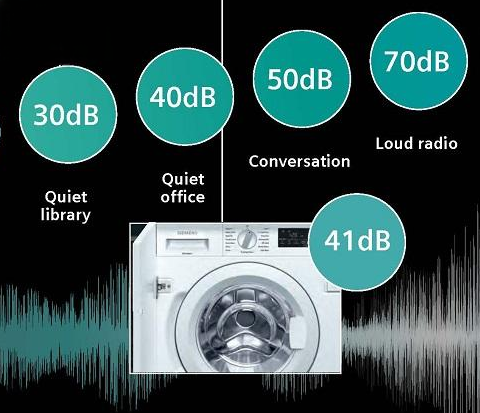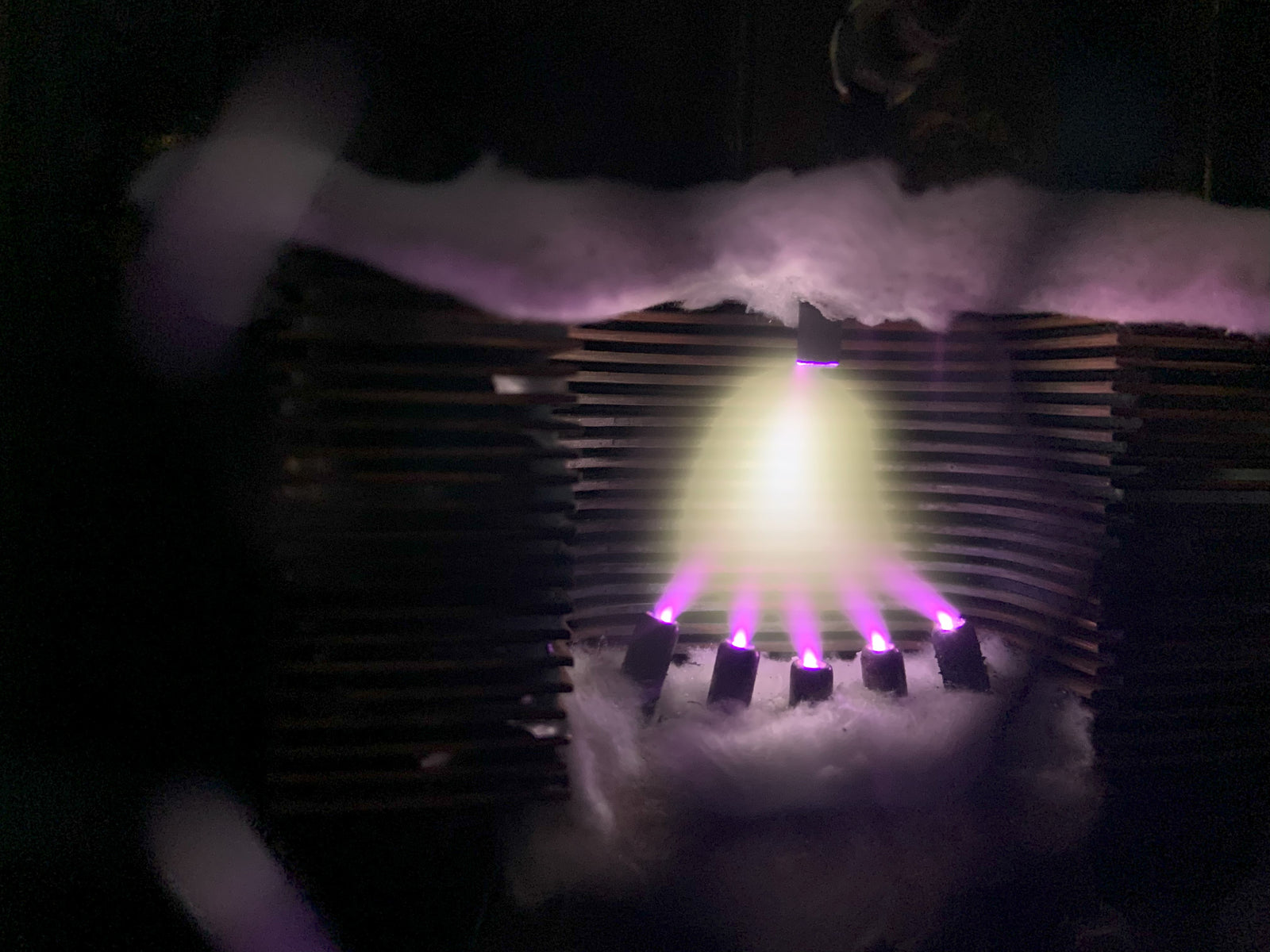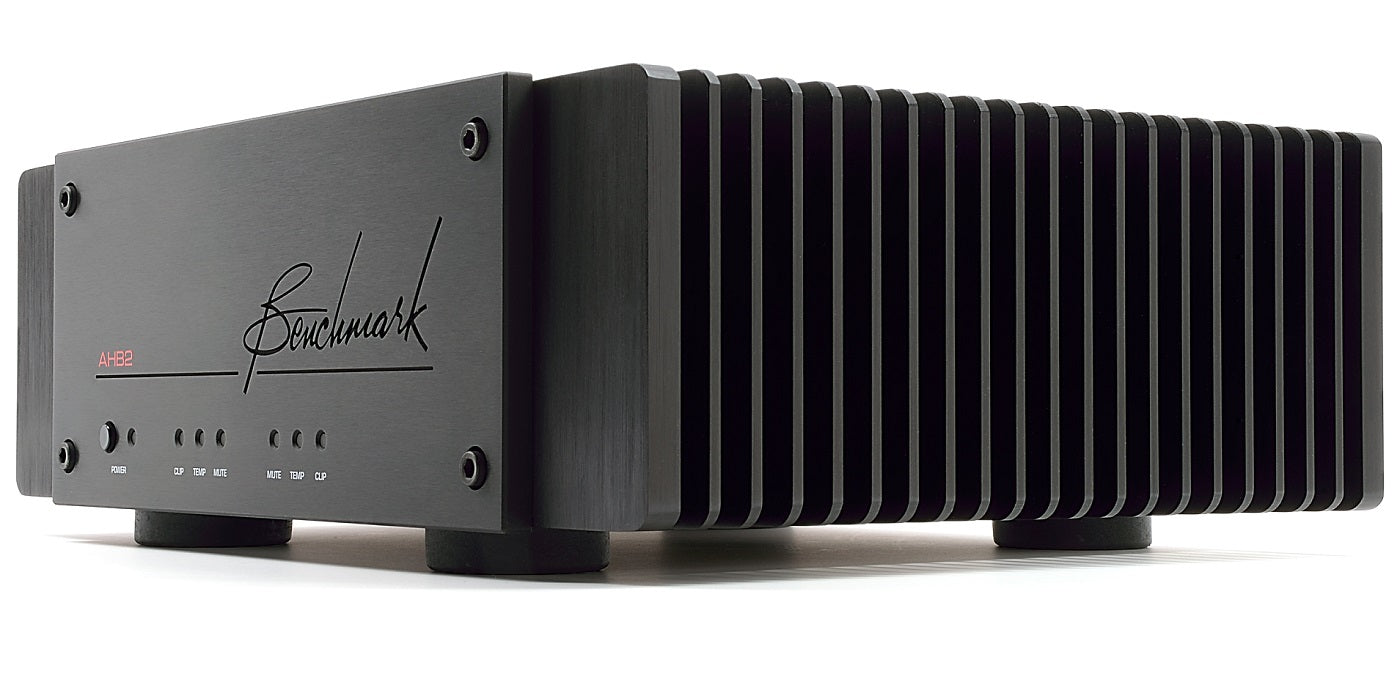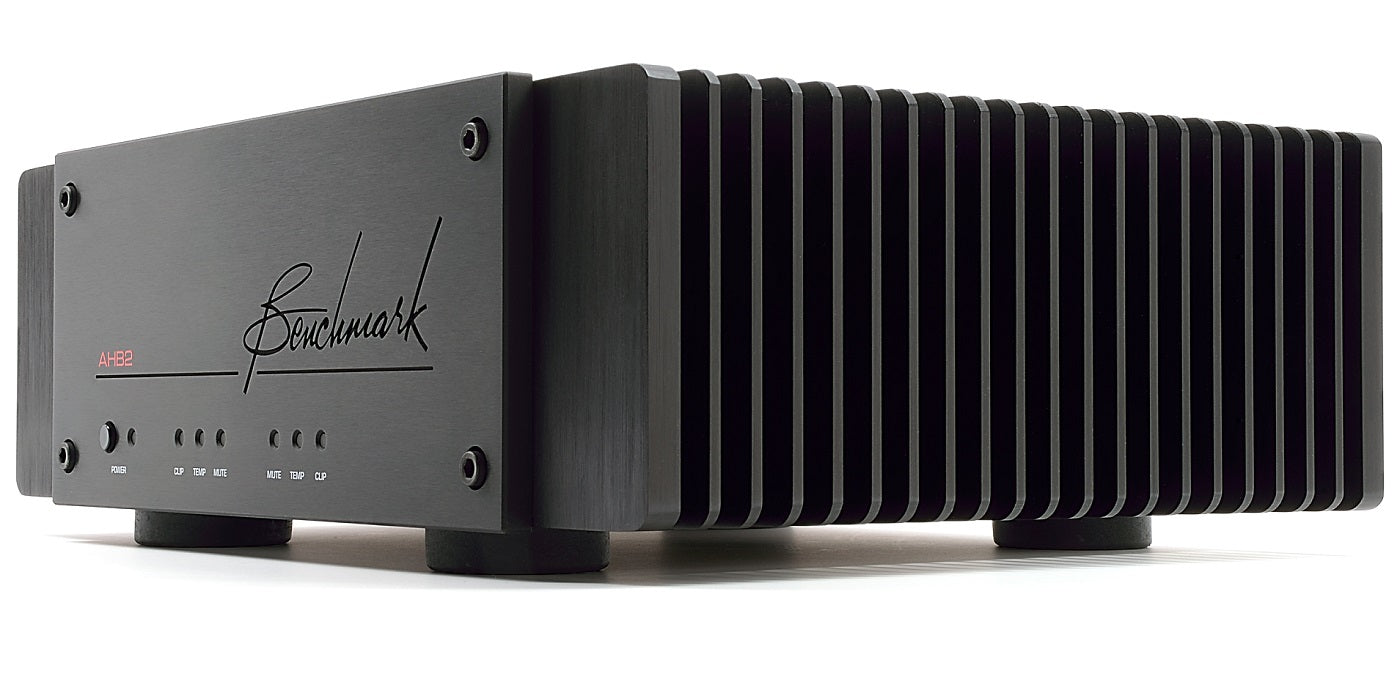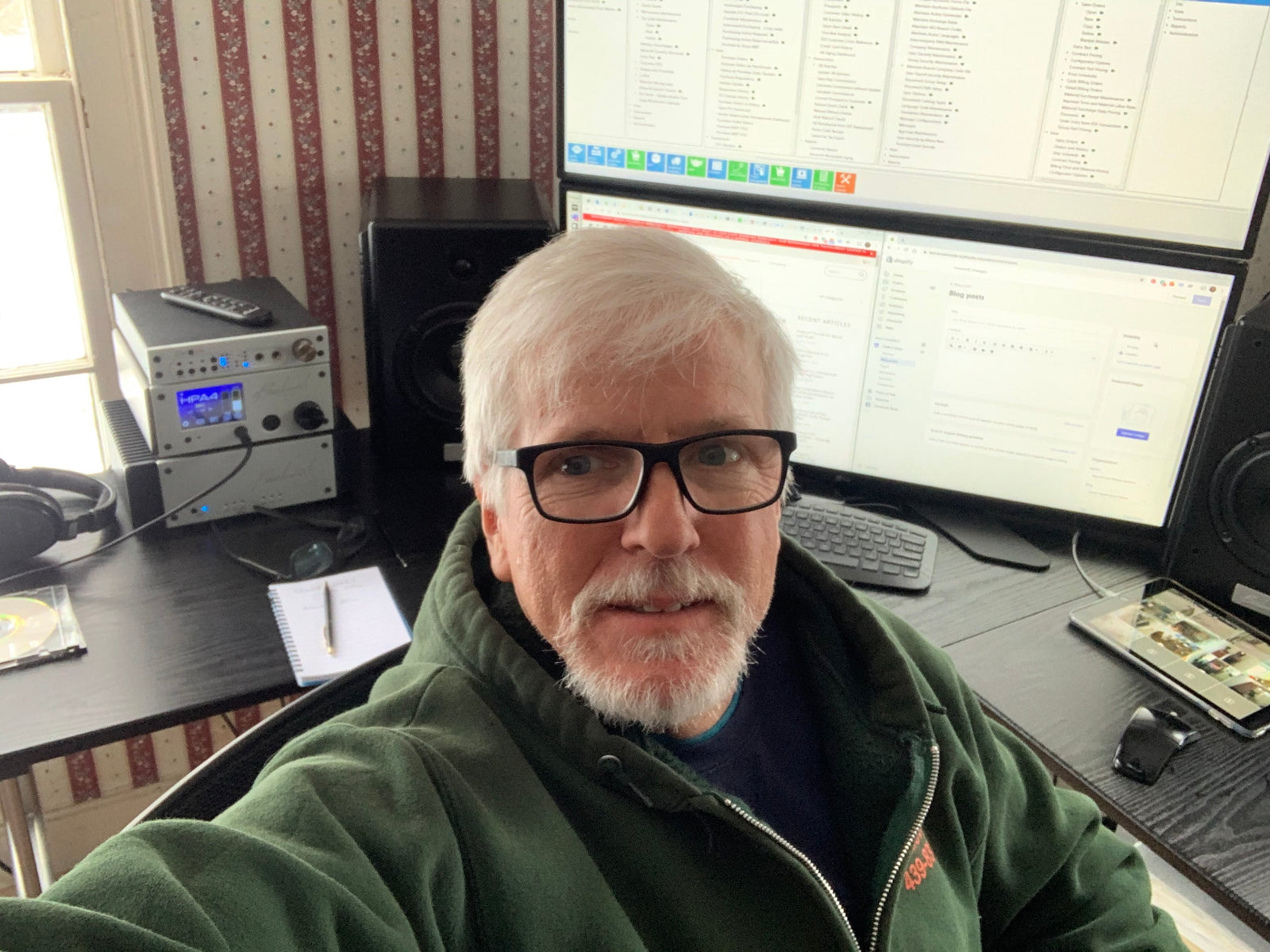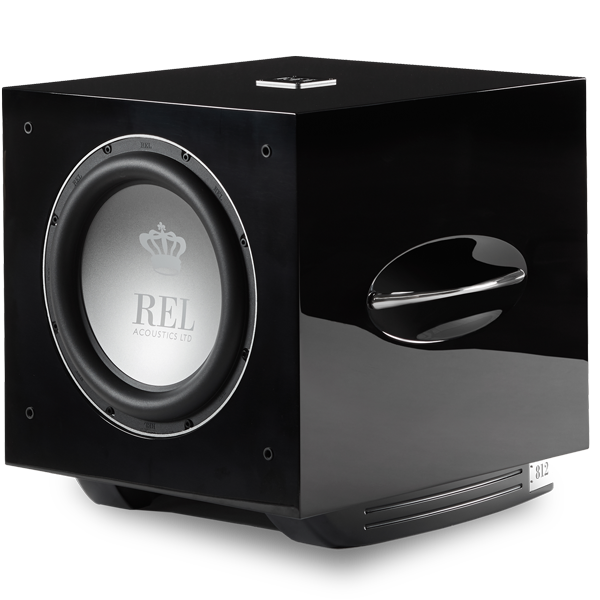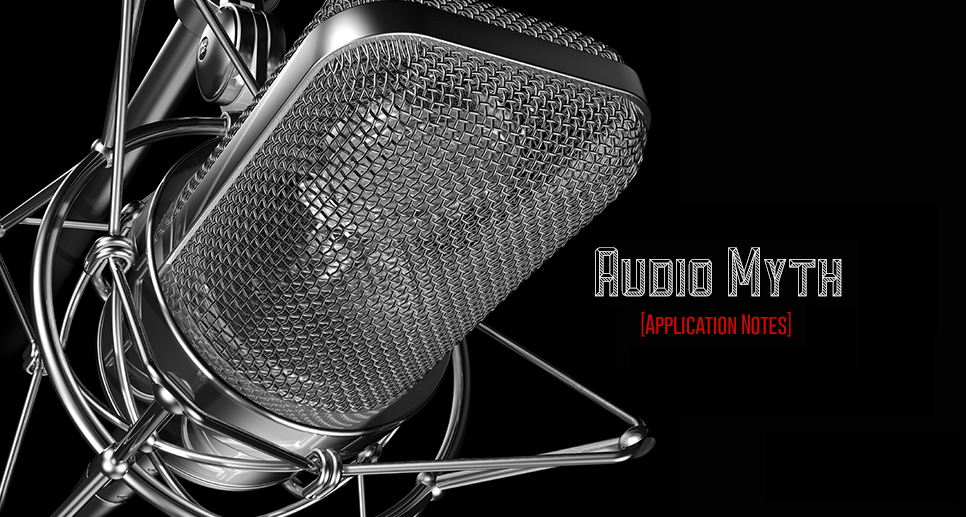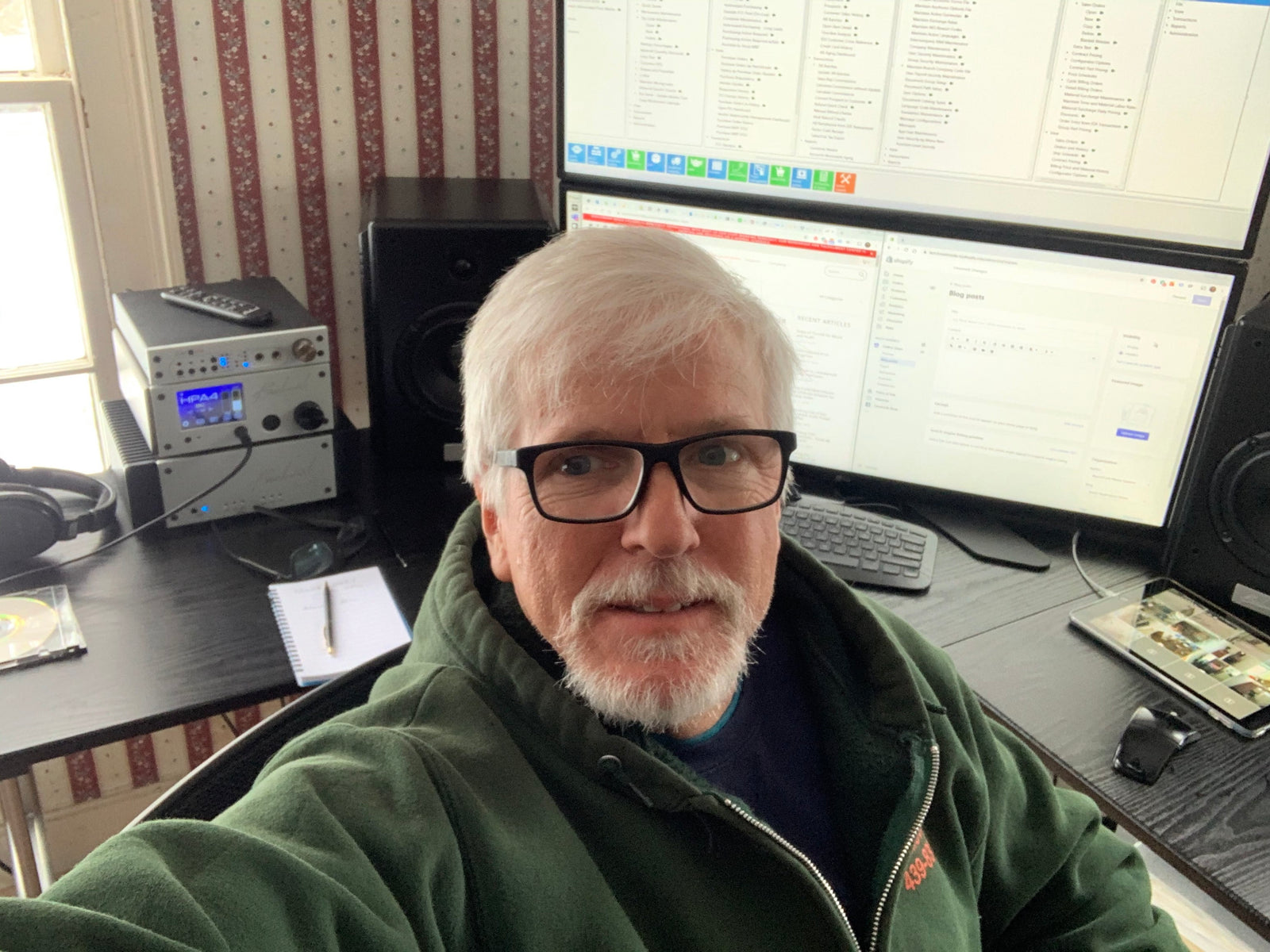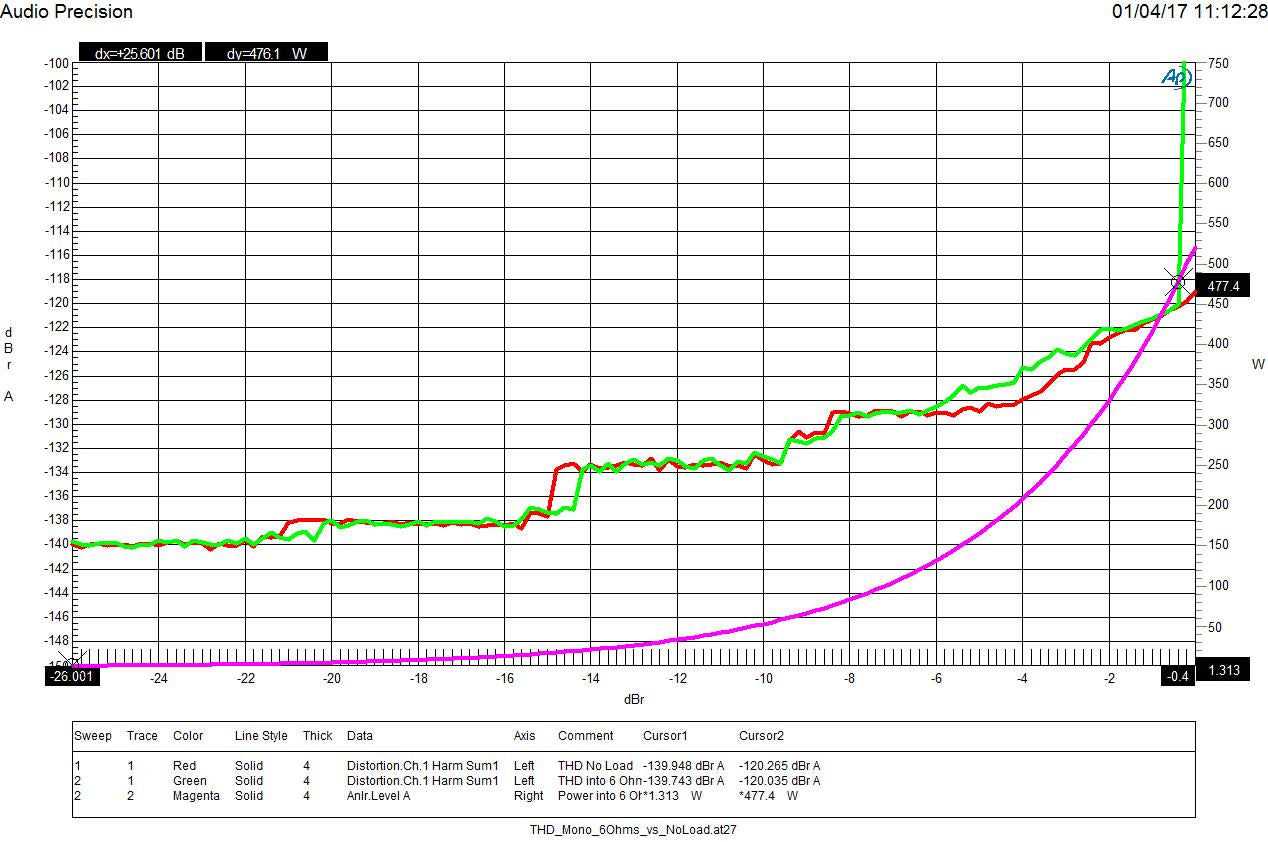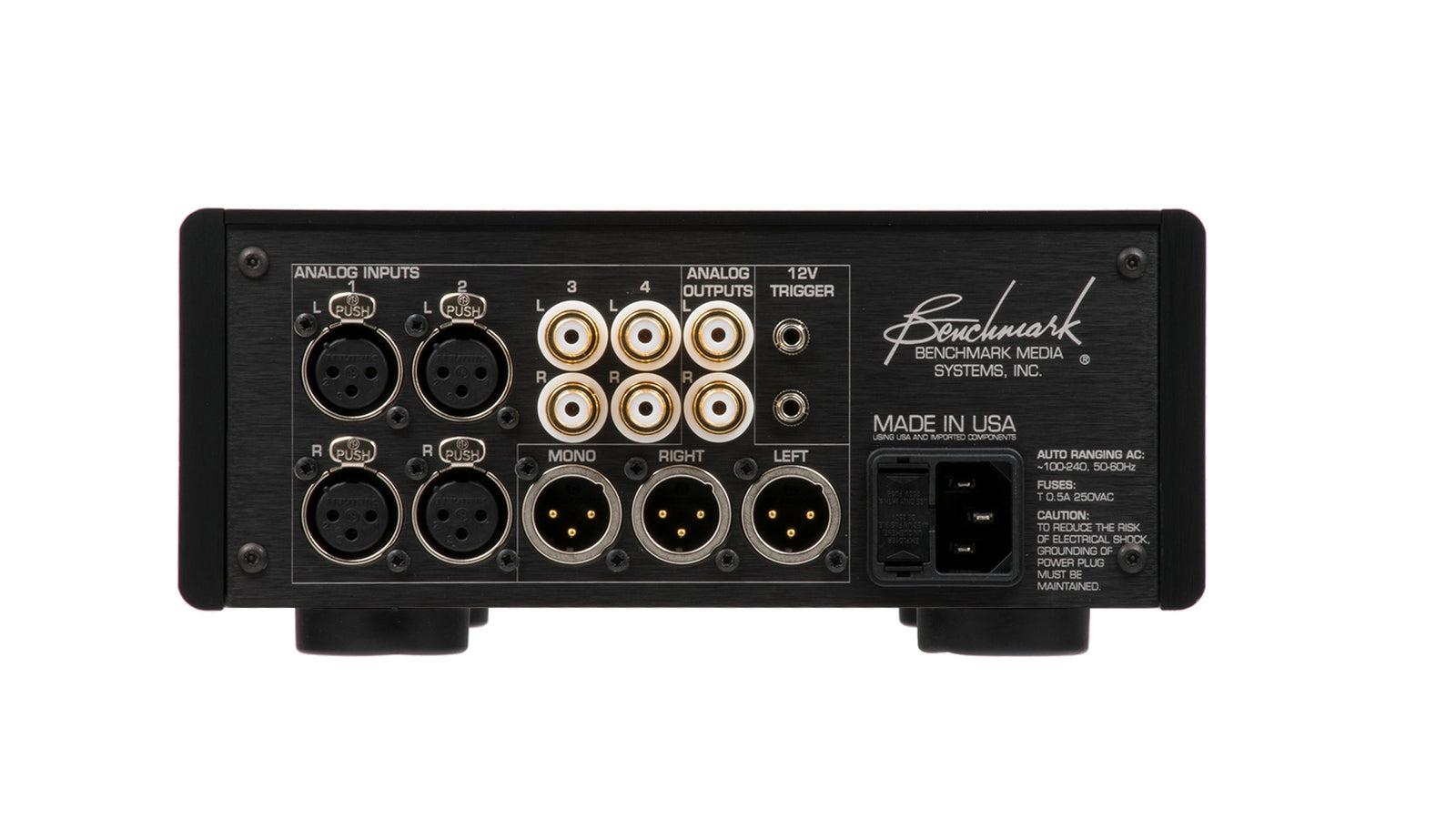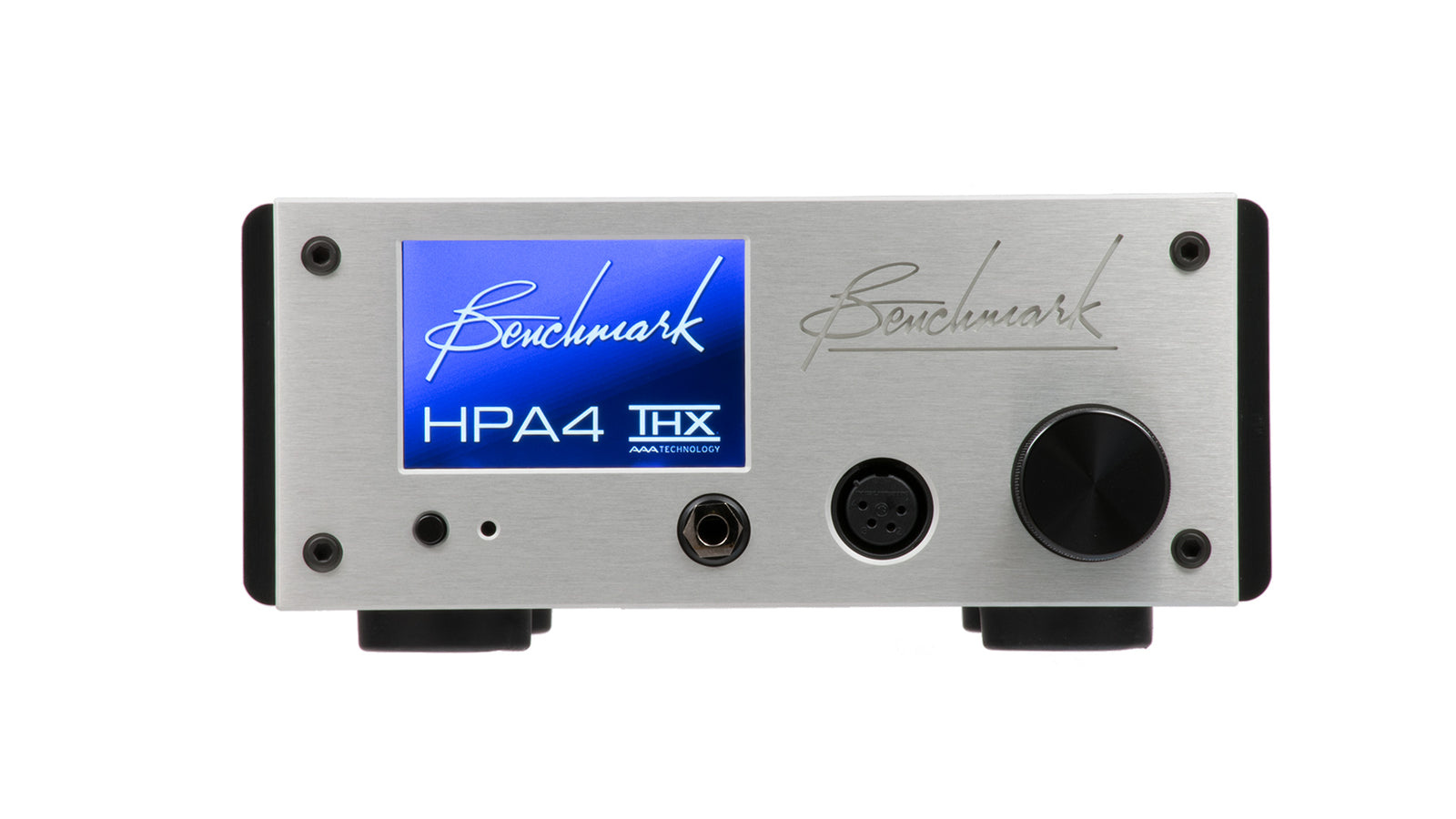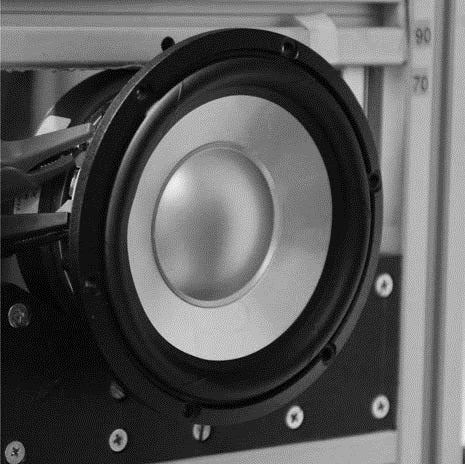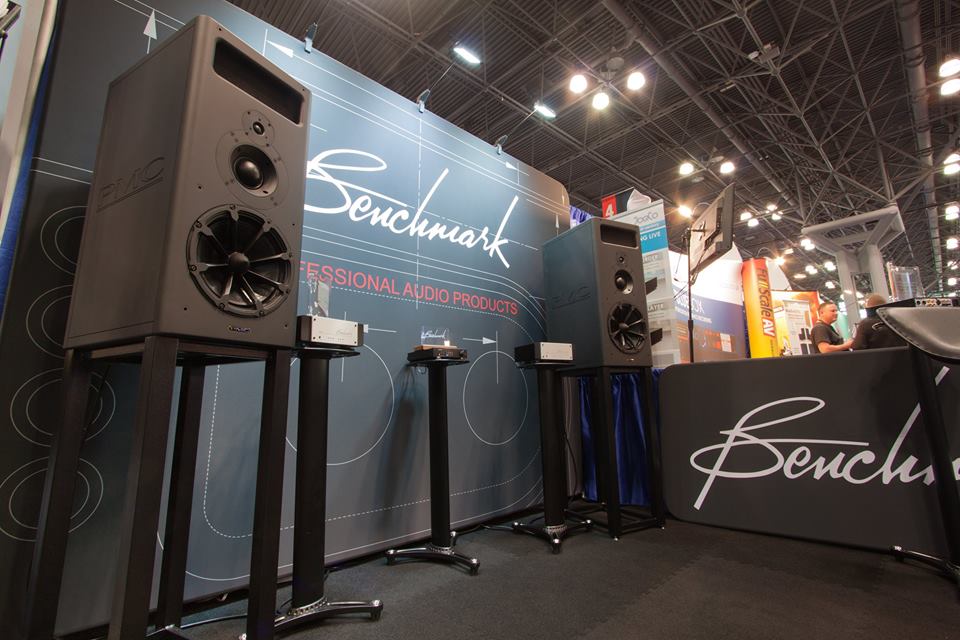Buy one component and save 10% on up to 2 cables. Buy 2 components and get 4 free cables. Free shipping on USA orders over $700. Low-cost shipping to Canada.
Buy one component and save 10% on up to 2 cables. Buy 2 components and get 4 free cables. Free shipping on USA orders over $700. Low-cost shipping to Canada.
Audio Application Notes
How Loud is the Distortion from Your Power Amplifier?
by John Siau August 08, 2025
Would you put a Washing Machine in your Listening Room?
If the answer is no, you may be surprised to discover that the distortion produced by your power amplifier may be louder than the noise produced by a major appliance.
Don't believe me? Take a look at Stereophile's test reports:
We selected 7 power amplifiers from Stereophile's top list of recommended amplifiers.
We took Stereophile's "THD+N vs. Power" plots for each, and replotted the data in a format that shows the loudness of the THD+N at the listening position.
The results are shocking!
Amplifier THD+N is louder than expected!
The distortion from your amplifier may be louder than a washing machine on the spin cycle, or it may be totally silent. How does yours perform? The answer is hidden in Stereophile's THD+N plots.
This application note reveals the hidden truth:
"The Distortion from your Power Amplifier may be Louder than a Washing Machine!"
I know, it sounds crazy, but this is what the measurements show!
Interpolator Overload Distortion
by John Siau November 20, 2024
Most digital playback devices include digital interpolators. These interpolators increase the sample rate of the incoming audio to improve the performance of the playback system. Interpolators are essential in oversampled sigma-delta D/A converters, and in sample rate converters. In general, interpolators have vastly improved the performance of audio D/A converters by eliminating the need for analog brick wall filters. Nevertheless, digital interpolators have brick wall digital filters that can produce unique distortion signatures when they are overloaded.
10% Distortion
An interpolator that performs wonderfully when tested with standard test tones, may overload severely when playing the inter-sample musical peaks that are captured on a typical CD. In our tests, we observed THD+N levels exceeding 10% while interpolator overloads were occurring. The highest levels were produced by devices that included ASRC sample rate converters.
Audiophile Snake Oil
by John Siau April 05, 2024
The Audiophile Wild West
Audiophiles live in the wild west. $495 will buy an "audiophile fuse" to replace the $1 generic fuse that came in your audio amplifier. $10,000 will buy a set of "audiophile speaker cables" to replace the $20 wires you purchased at the local hardware store. We are told that these $10,000 cables can be improved if we add a set of $300 "cable elevators" to dampen vibrations. You didn't even know that you needed elevators! And let's not forget to budget at least $200 for each of the "isolation platforms" we will need under our electronic components. Furthermore, it seems that any so-called "audiophile power cord" that costs less than $100, does not belong in a high-end system. And, if cost is no object, there are premium versions of each that can be purchased by the most discerning customers. A top-of-the line power cord could run $5000. One magazine claims that "the majority of listeners were able to hear the difference between a $5 power cable and a $5,000 power cord". Can you hear the difference? If not, are you really an audiophile?
Making Sound with Plasma - Hill Plasmatronics Tweeter
by John Siau June 06, 2023
At the 2023 AXPONA show in Chicago, I had the opportunity to see and hear the Hill Plasmatronics tweeter. I also had the great pleasure of meeting Dr. Alan Hill, the physicist who invented this unique device.
The plasma driver has no moving parts and no diaphragm. Sound is emitted directly from the thermal expansion and contraction of an electrically sustained plasma. The plasma is generated within a stream of helium gas. In the demonstration, there was a large helium tank on the floor with a sufficient supply for several hours of listening.

While a tank of helium, tubing, high voltage power supplies, and the smell of smoke may not be appropriate for every living room, this was absolutely the best thing I experienced at the show!
- John Siau
Audio Calculators
by John Siau June 04, 2023
We have added an "Audio Calculators" section to our webpage. Click "Calculators" on the top menu to see more like these:
System Performance Calculations
by John Siau June 03, 2023
If an audio system is composed of multiple components, we may have detailed specifications for each component, but we will not know the performance of the combined system without doing some calculations. You may have questions such as these:
- Will my audio system produce audible noise?
- Will my audio system produce audible distortion?
- How will my audio components work together as a system?
- How loud will my audio system play?
Use Benchmark's online audio calculators to find answers!
For example, if we know the output power of an amplifier, as well as the sensitivity and impedance of our loudspeakers, we can calculate the maximum sound pressure level that our system can produce.
This application note provides interactive examples that help to answer the questions listed above.
ChatGPT and John Siau Discuss Star-Quad Cables
by John Siau May 30, 2023
Today, Benchmark's John Siau and OpenAI's ChatGPT had a conversation about star-quad cables. It turns out that ChatGPT got quite a few things wrong, but learned quickly when these errors were pointed out by John Siau.
ChatGPT is quick to recognize mistakes, and quick to provide detailed corrections. In each of the first few corrections, additional errors were made. As each of these were pointed out, ChatGPT began to provide accurate information.
Here is my conversation with ChatGPT:

John Siau:
How do star-quad cables reject interference?

ChatGPT:
Star-quad cables are designed to provide improved rejection of ...
Secrets Q&A with John Siau of Benchmark Media Systems
by Benchmark Media Systems January 07, 2022
Secrets contributor Sumit Chawla recently caught up with Benchmark’s VP and Chief Designer, John Siau to get a little more in-depth on several subjects.

Q: "Benchmark is one of the few companies that publishes an extensive set of measurements, but you also balance that with subjective testing. Can you talk about the equipment, the listening room, and the process for subjective testing?"
Q: "Was there ever a time where you learned something from a subjective test that was not captured by measurements?"
Q: "You conducted some listening tests to determine whether distortion in the “First Watt” was audible. What test material did you use for this, and what did you find?"
Q: "The AHB2 amplifier incorporates THX Audio Achromatic Amplifier technology. When and how did the partnership with THX come about?"
Q: "Linear power supplies have been and remain quite popular in high-end devices. You favor switch-mode power supplies. When and why did you make this switch?"
... and more!
Listening vs. Measuring
by John Siau November 09, 2020
At Benchmark, listening is the final exam that determines if a design passes from engineering to production. When all of the measurements show that a product is working flawlessly, we spend time listening for issues that may not have shown up on the test station. If we hear something, we go back and figure out how to measure what we heard. We then add this test to our arsenal of measurements.
Benchmark's listening room is equipped with a variety of signal sources, amplifiers and loudspeakers, including the selection of nearfield monitors shown in the photo. It is also equipped with ABX switch boxes that can be used to switch sources while the music is playing.
Benchmark's lab is equipped with Audio Precision test stations that include the top-of-the-line APx555 and the older AP2722 and AP2522. We don't just use these test stations for R&D - every product must pass a full set of tests on one of our Audio Precision test stations before it ships from our factory in Syracuse, NY.
TAS interviews John Siau
by Benchmark Media Systems November 06, 2020

Paul Seydor of The Absolute Sound interviews John Siau, VP and chief designer at Benchmark Media Systems. The interview accompanies Paul's review of the LA4 in the December, 2020 issue of TAS.
"At Benchmark, listening is the final exam that determines if a design passes from engineering to production. But since listening tests are never perfect, it’s essential we develop measurements for each artifact we identify in a listening test. An APx555 test set has far more resolution than human hearing, but it has no intelligence. We have to tell it exactly what to measure and how to measure it. When we hear something we cannot measure, we are not doing the right measurements. If we just listen, redesign, then repeat, we may arrive at a solution that just masks the artifact with another less-objectionable artifact. But if we focus on eliminating every artifact that we can measure, we can quickly converge on a solution that approaches sonic transparency. If we can measure an artifact, we don't try to determine if it’s low enough to be inaudible, we simply try to eliminate it."
- John Siau
REL Subwoofers with AHB2 Power Amplifier
by John Siau November 05, 2020
Audio Myth - "Damping Factor Isn't Much of a Factor"
by John Siau June 04, 2020
Myth - "Damping Factor Isn't Much of a Factor"
Myth - "A Damping Factor of 10 is High Enough"
Myth - "All Amplifiers Have a High-Enough Damping Factor"
Where did these Myths Originate?
These myths seem to trace back to a well-know paper written by Dick Pierce. His analysis shows that a damping factor of 10 is virtually indistinguishable from a damping factor of 10,000 when it comes to damping the motion of a loudspeaker cone. This analysis has been examined and repeated in many more recent articles, such as a well-written post on Audiofrog.com by Andy Wehmeyer. Articles such as these are often cited as evidence that amplifier damping factor doesn't matter. The mathematical analyses are correct, but the conclusions are incomplete and misleading!
COVID-19 ... Don't just survive!
by John Siau March 23, 2020
A Week Ago, Life was Normal
How fast things can change!
It is March 23, 2020 and we are currently battling the worldwide COVID-19 pandemic.
This application note will be a departure from normal. I will make a few observations about the current situation and then look at the nuts and bolts of how we reconstructed our operations in less than 48 hours. Benchmark is 100% operational, but nothing looks the same as it did last week.
- John Siau
Rules of Thumb for Music and Audio
by John Siau April 01, 2019
As an engineer I like to use "rules of thumb" to make quick estimates that help to explain the physical world around me.
These rules of thumb are easy-to-remember approximations that eliminate the need for complicated and needlessly precise calculations.
If you feel discombobulated by the complexities of high school physics, there is hope! I encourage you to step back and take a fresh approach.
If you learn a few simple rules of thumb, you can unravel mysteries of the physical world, amaze your friends, and yourself.
In this paper I will present 15 simple rules that I find useful when working with music and audio.
- John Siau
Feed-Forward Error Correction
by John Siau October 11, 2018
The Benchmark AHB2 power amplifier and HPA4 headphone amplifier both feature feed-forward error correction. This correction system is an important subset of the patented THX-AAA™ (Achromatic Audio Amplifier) technology. It is one of the systems that keeps these Benchmark amplifiers virtually distortion free when driving heavy loads. It is also the reason that these amplifiers can support 500 kHz bandwidths without risk of instability when driving reactive loads.
This paper explains the differences between feedback and feed-forward systems. As you read this paper, you will discover that you already understand the benefits of feed-forward correction because you use it instinctively to improve a feedback system commonly found in your automobile. If feed-forward correction can improve your driving experience, it may also improve your listening experience!
- John Siau
Balanced vs. Unbalanced Analog Interfaces
by John Siau April 23, 2018
If you look at the back of any Benchmark product, you will find balanced XLR analog-audio connectors. As a convenience, we also provide unbalanced RCA connectors on many of our products. In all cases, the balanced interfaces will provide better performance.
We build our unbalanced interfaces to the same high standards as our balanced interfaces, but the laws of physics dictate that the balanced interfaces will provide better noise performance.
This application note explains the advantages of balanced interfaces.
- John Siau
Relay-Controlled Volume - The Ultimate Solution for Analog Audio
by John Siau April 11, 2018
Benchmark has introduced a new analog-to-analog volume control circuit that features a 256-step relay-controlled attenuator and a 16-step relay-controlled boost amplifier. The volume control has a +15 dB to -122 dB range in 0.5 dB steps and is a key component in the HPA4 Headphone / Line Amplifier.
Our goal was to produce an analog-to-analog volume control with the highest achievable transparency. We wanted to be able to place this volume control in front of our AHB2 power amplifier or in front of our THX-888 headphone amplifier board without diminishing the performance of either device. Our volume control would need to have lower distortion and lower noise than either of these amplifiers. Given the extraordinary performance of these THX-AAA amplifiers, this would not be an easy task!
This application note discusses the engineering decisions that went into the development of this new analog volume control circuit. The end result is a fully buffered volume control with a signal-to-noise ratio that exceeds 135 dB. THD measures better than the -125 dB (0.00006%) limits of our test equipment.
- John Siau
Laboratory Use of the Benchmark AHB2 Power Amplifier
by John Siau January 26, 2018
SEAS, a well-known manufacturer of high-quality loudspeakers, selected the Benchmark AHB2 as a key component for use in testing loudspeakers. They created an innovative test system that measures loudspeaker motor strength and moving mass with higher accuracy than previous methods. This new measurement system was documented in the December 2017 Journal of the Audio Engineering Society.
According to the AES paper, the SEAS team selected the Benchmark AHB2 for the following reasons:
"A Benchmark AHB2 amplifier is used, which has excellent signal-to-noise ratio and bandwidth, low output impedance, and is suitable for laboratory use (with advanced overload protection)."
The AHB2 was designed to outperform all competing power amplifiers in terms of noise and distortion. The result is an amplifier with unrivaled transparency.
Our goal was to create the ultimate amplifier for the enjoyment of music. It is nice to know that the AHB2 is also being used to test new and improved loudspeakers!
- John Siau
Interpreting THD Measurements - Think dB not Percent!
by John Siau November 15, 2017
Distortion measurements (THD, THD+N and IMD) are traditionally expressed in terms of percent. But what do 1%, 0.1%, 0.01% or 0.001% mean in terms of loudness or audibility?
If you are like most people you just know that 0.001% is the best of the three numbers listed above. If you are a well-trained geek you will recognize that each added leading zero represents a 20 dB improvement. 0.01% is 20 dB lower than 0.1% and 40 dB lower than 1%. The well-trained geek will convert % to dB in order to give meaning to these numbers.
When THD is expressed in terms of dB, we can easily determine how loud the distortion will be in our playback system.
Will my audio electronics produce audible distortion?
Will the distortion produced by my audio electronics be inaudible?
- John Siau
Calculating the Performance of an Amplifier-Speaker Combination - Example 2
by John Siau October 27, 2017
Example 2 - PMC MB2S
In this application note we calculate the maximum output level and noise level produced by an amplifier/loudspeaker combination.
This application note can serve as an example for calculating the maximum sound pressure levels and noise output levels for any amplifier/speaker combination.
At the 143rd AES conference in NYC, we demonstrated two Benchmark AHB2 monoblock power amplifiers driving a pair of 4-Ohm PMC MB2S studio monitors.
We were extremely impressed by the unusually clean, distortion-free, output of these monitors. They fully compliment the distortion-free performance of the AHB2 to provide a system with outstanding clarity while delivering high sound pressure levels.
In this application note we will calculate the peak SPL produced by this system. We will also calculate the acoustic noise at a distance of 1 meter from each monitor. We will also discuss some of the unique design features of the MB2S monitors that contribute to their impressive performance.
- John Siau


